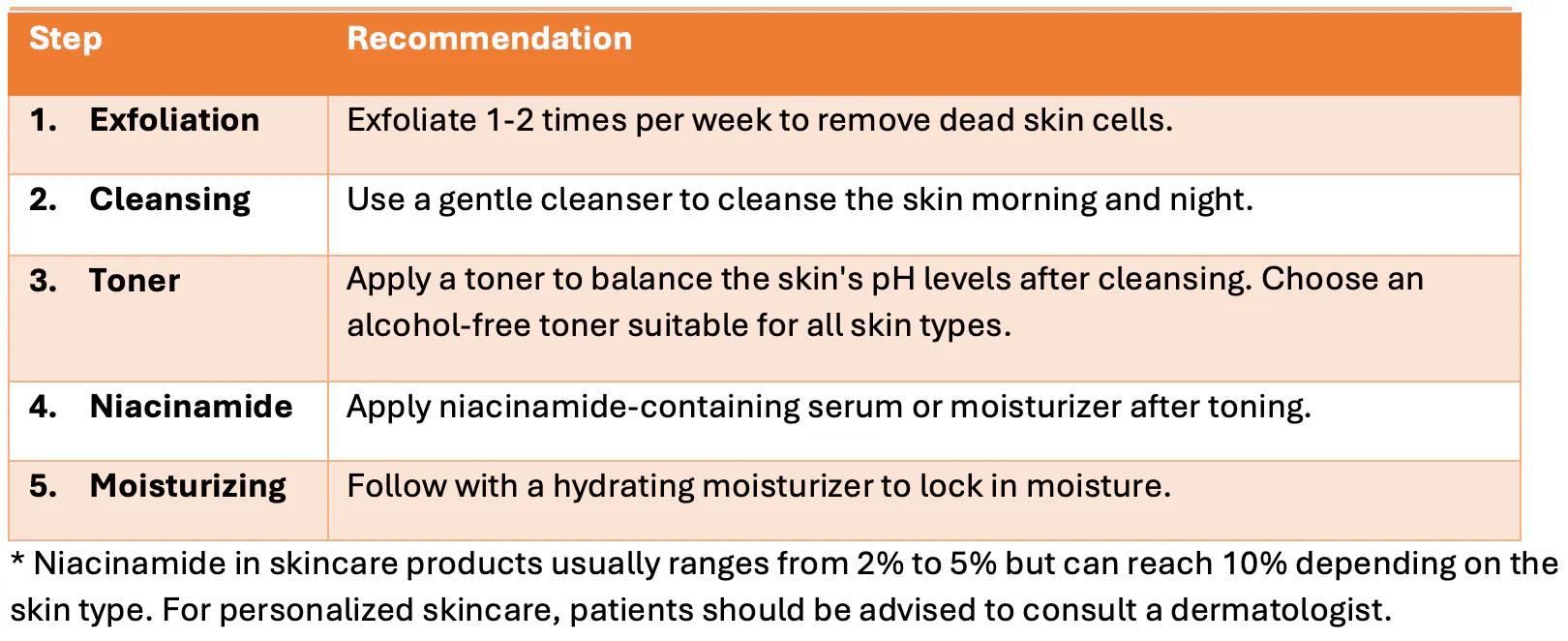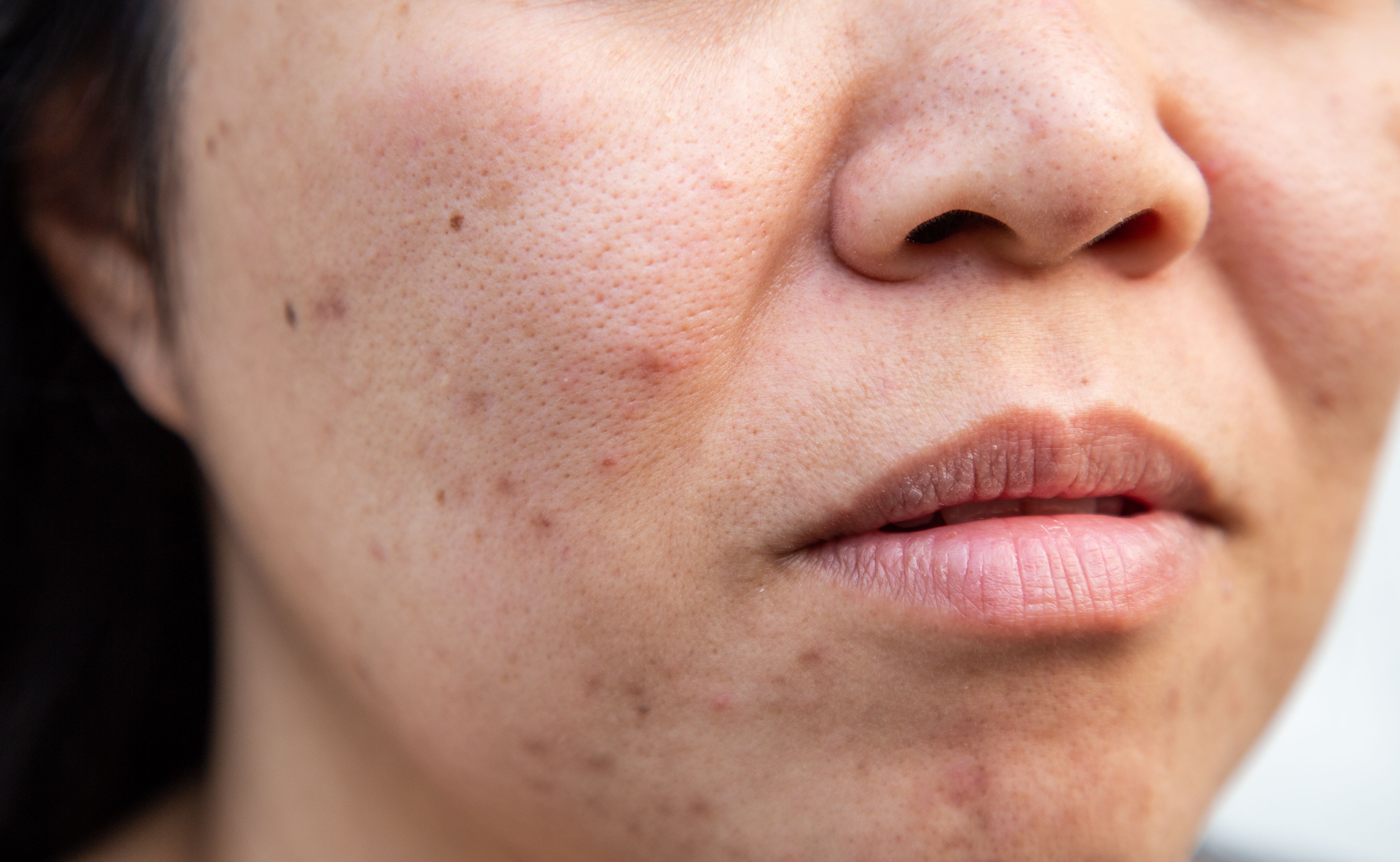- Acne
- Actinic Keratosis
- Aesthetics
- Alopecia
- Atopic Dermatitis
- Buy-and-Bill
- COVID-19
- Case-Based Roundtable
- Chronic Hand Eczema
- Chronic Spontaneous Urticaria
- Drug Watch
- Eczema
- General Dermatology
- Hidradenitis Suppurativa
- Melasma
- NP and PA
- Pediatric Dermatology
- Pigmentary Disorders
- Practice Management
- Precision Medicine and Biologics
- Prurigo Nodularis
- Psoriasis
- Psoriatic Arthritis
- Rare Disease
- Rosacea
- Skin Cancer
- Vitiligo
- Wound Care
News
Article
The Role of Pharmacists in Providing Patient Counseling On Topical Niacinamide For Acne and More
Author(s):
Niacinamide is a versatile skincare ingredient that effectively targets acne, age-related issues, hyperpigmentation, and atopic dermatitis, writes Anjeza Fero, PharmD, RPh.
Niacinamide, also known as nicotinamide, is a vital form of Vitamin B3 essential for cellular metabolism. In skin care, niacinamide has gained popularity due to its multifaceted benefits. It can be found in many skincare formulations including facial serums, cleansers, eye creams, and moisturizers.
Topical niacinamide stabilizes the skin's outer barrier, reducing water loss and improving moisture levels in the epidermis.1 It also facilitates the production of proteins such as keratin, increases the synthesis of ceramides and hastens the maturation of keratinocytes.1 Furthermore, it raises the levels of nicotinamide adenine dinucleotide phosphate (NADP) within cells. NADP supports various cellular functions such as energy generation, antioxidant protection, and DNA repair.1 These cellular mechanisms are crucial for maintaining the skin's structural integrity by strengthening its barrier function and maintaining optimal moisture levels. As a result, they enhance skin vitality and contribute to a radiant complexion.
Niacinamide's Role in Acne Treatment
Niacinamide addresses skin care concerns such as acne, signs of aging, hyperpigmentation, and improving skin texture. A study conducted at Thammasat University in Thailand evaluated acne treatments in participants aged 18 or older with mild to moderate facial acne vulgaris who were assessed using the Leeds Revised Acne Grading System.2 The exclusion criteria stated that individuals who had used topical acne medication in the 2 weeks prior to the study were not eligible to participate.2
The results showed that the combination of 2.5% benzoyl peroxide and 5% niacinamide was more effective than 2.5% benzoyl peroxide alone in treating mild to moderate facial acne vulgaris.2 The niacinamide group demonstrated reductions in acne lesion count and sebum levels compared to the cream base group, with a notable decrease in noninflammatory lesions.
Similarly, in another study with findings published in the International Journal of Dermatology, a topical blend containing 4% niacinamide demonstrated comparable effectiveness to 1% clindamycin in treating acne.3 The study found that both nicotinamide and clindamycin effectively reduced acne severity within their groups (p < 0.001).3 There was no significant difference in their effectiveness (p > 0.05), indicating they work similarly for treating acne.3 Therefore, nicotinamide serves as a beneficial alternative for acne treatment.
Beyond Acne: Niacinamide's Benefits
Niacinamide demonstrates versatility beyond acne treatment by improving fine lines, hyperpigmentation spots, texture, red blotchiness, and skin yellowing. In a 12-week clinical trial, participants using a moisturizer containing 5% niacinamide experienced significant improvements in these areas compared to a control moisturizer.4 These findings validate niacinamide's effectiveness and tolerability in addressing diverse skincare concerns with minimal side effects.
Atopic dermatitis, commonly known as eczema, is persistent and characterized by inflammation, redness, and irritation.5 A clinical study utilized a single-center, randomized, placebo-controlled design to investigate the impact of niacinamide-containing body emollients and a niacinamide-containing cleansing gel on mild atopic dermatitis (AD) in adults.6 The study demonstrated that niacinamide-containing body emollients improved clinical symptoms, quality of life, and skin barrier function in patients with mild atopic dermatitis.
Overall, niacinamide is a versatile skincare ingredient that effectively targets acne, age-related issues, hyperpigmentation, and atopic dermatitis. Pharmacists can counsel patients on proper OTC product selection, proper use and storage, and how to safely utilize niacinamide-containing products with other anti-acne products (see table).
Skin care regimen recommendations; courtesy of Pharmacy Times

Anjeza Fero, PharmD, RPh, is a pharmacist and professor at the University of Connecticut in the Department of Physiology and Neurobiology.
References
- Gehring W. Nicotinic acid/niacinamide and the skin. J Cosmet Dermatol. 2004;3(2):88-93. doi:10.1111/j.1473-2130.2004.00115.x
- Kaewsanit T, Chakkavittumrong P, Waranuch N. Clinical Comparison of Topical 2.5% Benzoyl Peroxide plus 5% Niacinamide to 2.5% Benzoyl Peroxide Alone in the Treatment of Mild to Moderate Facial Acne Vulgaris. J Clin Aesthet Dermatol. 2021;14(6):35-41.
- Khodaeiani E, Fouladi RF, Amirnia M, Saeidi M, Karimi ER. Topical 4% nicotinamide vs. 1% clindamycin in moderate inflammatory acne vulgaris. Int J Dermatol. 2013;52(8):999-1004. doi:10.1111/ijd.12002
- Bissett DL, Miyamoto K, Sun P, Li J, Berge CA. Topical niacinamide reduces yellowing, wrinkling, red blotchiness, and hyperpigmented spots in aging facial skin. Int J Cosmet Sci. 2004;26(5):231-238. doi:10.1111/j.1467-2494.2004.00228.x
- Atopic dermatitis. National Institute of Arthritis and Musculoskeletal and Skin Diseases. July 27, 2023. Accessed February 28, 2024. https://www.niams.nih.gov/health-topics/atopic-dermatitis.
- Zhu JR, Wang J, Wang SS. A single-center, randomized, controlled study on the efficacy of niacinamide-containing body emollients combined with cleansing gel in the treatment of mild atopic dermatitis. Skin Res Technol. 2023;29(9):e13475. doi:10.1111/srt.13475
[This article was originally published by our sister publication, Pharmacy Times.]
Newsletter
Like what you’re reading? Subscribe to Dermatology Times for weekly updates on therapies, innovations, and real-world practice tips.












